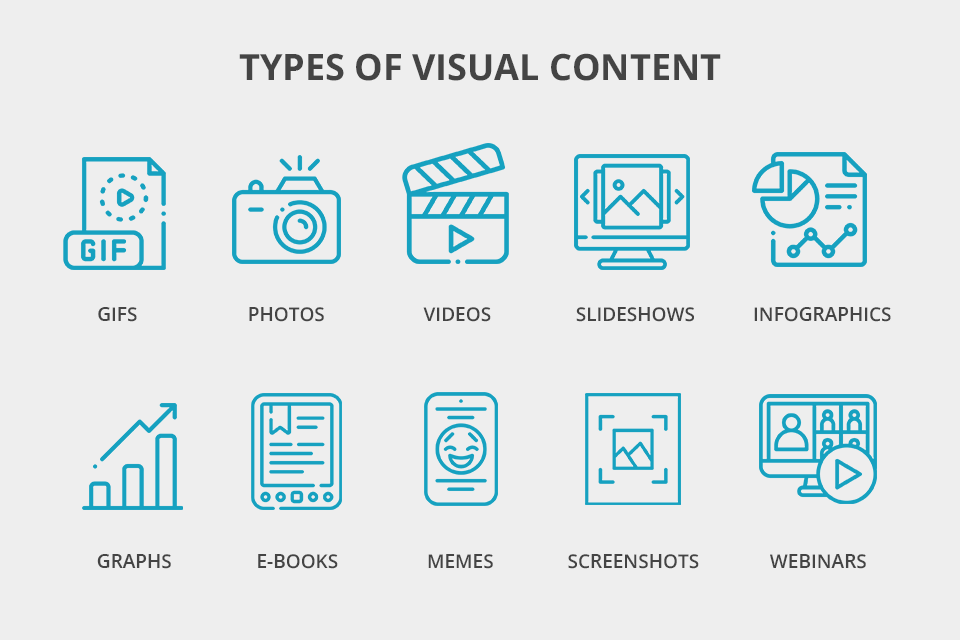In today’s digital age, content marketing has become a crucial strategy for businesses to connect with their target audience and drive engagement. While written content is important for conveying information and building brand authority, visual content plays an equally significant role in capturing audience attention and delivering a memorable message. In this article, we will explore the importance of visual content in effective content marketing and how businesses can leverage it to enhance their marketing efforts.
The Power of Visual Communication
Visual content has the power to convey complex ideas and emotions in a way that written content alone cannot. Studies have shown that the human brain processes visual information much faster than text, making it a highly effective tool for communicating with audiences. In fact, research has found that visuals can increase a person’s willingness to read a piece of content by up to 80%.
Furthermore, visuals have the ability to evoke emotions and create a more engaging and memorable experience for the audience. Whether it’s through images, videos, infographics, or other visual elements, businesses can use visual content to tell a compelling story, build brand identity, and connect with their target audience on a deeper level.
The Role of Visual Content in Content Marketing
Visual content plays a crucial role in the success of content marketing strategies. When used effectively, visual elements can enhance the overall impact of written content, increase engagement, and drive conversions. Here are some key ways in which visual content can enhance content marketing efforts:
Increased Engagement
Visual content is more likely to capture the audience’s attention and keep them engaged with the content. Studies have shown that content with relevant images receives significantly more views and shares than text-only content. By incorporating visuals into their content marketing strategy, businesses can increase engagement and keep their audience interested in their message.
Improved Brand Awareness
Visual content is a powerful tool for building brand awareness and identity. By using consistent visual elements such as colors, logos, and design styles, businesses can create a cohesive brand image that resonates with their target audience. Visual content can help businesses stand out in a crowded marketplace and leave a lasting impression on their audience.
Enhanced Storytelling
Visual content can be used to tell a compelling story and create a more immersive experience for the audience. Whether it’s through a series of images, a video, or an infographic, businesses can use visual elements to convey their brand message in a creative and engaging way. Visual storytelling can evoke emotions, build connections with the audience, and communicate complex ideas in a simple and memorable way.
Best Practices for Using Visual Content in Content Marketing
When incorporating visual content into content marketing strategies, businesses should keep the following best practices in mind:
Keep it Relevant
Visual content should always be relevant to the topic and purpose of the content. Each visual element should serve a specific purpose and enhance the overall message that businesses are trying to convey. Irrelevant visuals can confuse the audience and detract from the impact of the content.
Optimize for SEO
Visual content can also play a role in improving a website’s search engine optimization (SEO) performance. By optimizing image alt text, file names, and descriptions, businesses can make their visual content more discoverable and improve their website’s ranking on search engine results pages.
Use Consistent Branding
Visual content should be consistent with the brand’s identity and values. By using a consistent color palette, design style, and tone of voice, businesses can create a cohesive brand image that resonates with their target audience. Consistent branding can help build brand recognition and loyalty among consumers.
Conclusion
Visual content plays a crucial role in effective content marketing strategies. By incorporating visuals into their content, businesses can increase engagement, improve brand awareness, and enhance storytelling. Visual content has the power to capture the audience’s attention, evoke emotions, and create a more immersive experience for the audience. Businesses that leverage visual content in their content marketing efforts are likely to see a significant impact on their overall marketing performance.
By following best practices and incorporating visual elements that are relevant, optimized for SEO, and consistent with branding, businesses can create a powerful visual content strategy that resonates with their target audience and drives engagement.

